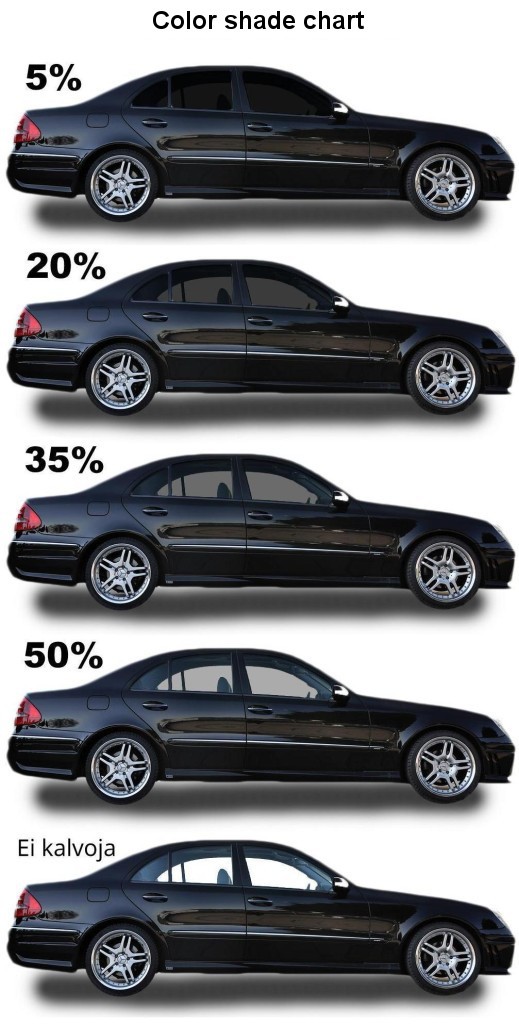Auto Window Tinting: Lasting Security for Your Cars and truck's Windows
Auto Window Tinting: Lasting Security for Your Cars and truck's Windows
Blog Article
Window Tinting Rules and Guidelines: What You Required to Know Prior To Tinting Your Cars And Truck
Before continuing with window tinting for your vehicle, it is important to acquaint on your own with the varied legislations and standards that control this method across various states. These guidelines dictate the allowable levels of tint darkness, commonly determined by noticeable light transmission (VLT) portions, and include particular specifications for front windshields intended at making sure road security.
Introduction of Window Tinting Regulations
Window tinting laws are frequently based on variation across different territories, reflecting neighborhood policies and security considerations. These legislations determine the acceptable levels of color darkness and reflectiveness on automobile home windows, making certain that vehicle drivers maintain adequate presence while also shielding versus damaging UV rays and warmth.
The majority of laws identify home window tinting based on the Visible Light Transmission (VLT) percent, which indicates the amount of light that can travel through the home window. Generally, lower VLT percents indicate darker colors. Laws typically set apart in between the front, side, and rear windows, with stricter limitations applied to the front windshield to enhance security for both the vehicle driver and other roadway users.
Compliance with window tinting laws is crucial, as offenses can result in penalties, necessary elimination of the color, and potential rises in insurance policy premiums. It is important for automobile owners to familiarize themselves with local legislations prior to continuing with window tinting setups.
State-by-State Color Laws
Understanding the details home window tinting laws in each state is crucial for car owners seeking to comply with the legislation. Each state in the U.S. has actually developed its own collection of guidelines regulating window tinting, which can differ substantially. These policies frequently determine the allowable levels of color darkness, the sorts of windows that can be tinted, and any clinical exceptions that might use.
For example, states like California have rigorous constraints on color darkness for front windows, while others, such as New Mexico, may permit darker tints. Additionally, particular states mandate details visibility percentages for different home windows, consisting of the windscreen, front side windows, and rear home windows. It is crucial for car proprietors to acquaint themselves with their state's laws to prevent potential fines or penalties.
In addition, some states may require an accreditation sticker label to be put on colored windows, suggesting conformity with state legislations. Failure to stick to these guidelines not only takes the chance of lawful consequences yet can additionally impact safety and exposure while driving. Car owners ought to perform complete study or seek advice from regional authorities to make certain complete understanding and conformity with state-by-state tint regulations.
Allowed Color Levels and Types
Many car owners might be amazed to discover that permitted color levels and kinds vary widely throughout various states. Each state has developed its very own policies relating to the acceptable darkness and reflectivity of home window color, commonly measured by Visible Light Transmission (VLT) my website percents. VLT describes the quantity of light that can pass through the tinted home windows; thus, a lower percentage indicates a darker tint.

In addition, the kinds of color products enabled can vary, with some states prohibiting metal or mirror-like surfaces. It is vital for car owners to acquaint themselves with their state's specific legislations to make sure compliance. Non-compliance can result in penalties, obligatory removal of the tint, or other legal repercussions, making it crucial to recognize these regulations prior to continuing with setup.
Medical Exemptions for Tinting
While not all states offer allowances for medical exemptions concerning home window tinting, those that do acknowledge the requirement for certain people to improve visibility and convenience due to medical conditions. Different clinical conditions, such as lupus, skin cancer, and specific eye conditions, can render people especially conscious sunshine. These individuals might need darker colors to safeguard themselves from harmful UV rays and glow.

It is very important to note that despite a clinical exemption, there may still be restrictions on the level of tint permitted. Compliance with state laws makes certain that individuals are both secured and within legal limits. Those thinking about clinical exceptions need to call their neighborhood Department of Electric motor Vehicles or comparable authority to comprehend the treatments and requirements necessary to make an application for an exception successfully.
Fines for Non-Compliance
Failing to abide by home window tinting laws can cause considerable fines, which differ by state. Law enforcement agencies are empowered to provide citations for lorries that do not abide by the defined tinting policies. These fines generally include penalties, which can range from small total up to several hundred bucks, depending upon the intensity of the offense and the state concerned.
In some jurisdictions, click here now duplicated offenses might result in escalating penalties or additional fines, such as mandatory court looks. Furthermore, non-compliance may necessitate the removal of unlawful tinting, usually at the proprietor's cost. In severe situations, habitual culprits may encounter suspension of their car registration up until compliance is accomplished.
Additionally, insurance policy effects might arise from getting multiple citations for window tint infractions. Insurance firms may see such offenses as an indication of riskier habits, potentially resulting in increased costs or problem in coverage.
To stay clear of these penalties, it is important for vehicle proprietors to familiarize themselves with their neighborhood home window tinting laws and make sure that their car complies (Window Tinting). This proactive approach not just prevents legal ramifications but additionally advertises road safety
Conclusion

The majority of laws classify home window tinting based on the Visible Light Transmission (VLT) percent, which indicates the amount of light that can pass through the home window. Conformity with home window tinting laws is essential, as infractions can result in penalties, compulsory elimination of the tint, and potential increases in insurance coverage costs.Comprehending the certain window tinting guidelines in each state is vital for vehicle owners seeking to abide with the regulation. These regulations often dictate the permitted levels of color darkness, the types of windows that can be tinted, and any type of clinical exceptions that might apply.
For circumstances, states like The golden state have stringent restrictions on tint darkness for front home windows, while others, such as New Mexico, might enable darker colors.
Report this page